How HR Drives Profit: Engagement and Performance Management
In today’s macro-economic climate, most companies are running lean, being extra cautious of their bottom line. Unfortunately, HR departments are often seen as a cost center. However, the reality is that HR processes are a critical component in the financial performance of an organization. It is time to embrace this department’s role as a key business driver. A great place to start is by designing processes that build high performance—with the singular most critical piece being an engaged workforce.
Give Employees a Reason to Be Inspired!
Employee engagement is the cornerstone of a productive and profitable business. When employees feel valued, motivated, and connected to their work, they are more likely to put in the extra effort, innovate, and stay committed to the company. Here’s how you can foster a culture of engagement and drive your business forward.
Find Your Talent Philosophy
A critical—and often overlooked—first step toward improving employee engagement is your talent philosophy. At its most fundamental, a talent philosophy defines the performance values needed to achieve business objectives. This philosophy acts as a guiding light for all HR processes, ensuring that they are aligned with the overall goals of the company.
Key Questions to Define Your Talent Philosophy:
What does good versus excellent performance look like?
– Clearly distinguish between satisfactory performance and exceptional achievements. This helps set clear expectations for employees and motivates them to strive for excellence.
Does your organization value only the outcomes or how the work was accomplished as well?
– Consider both the results and the behaviors that lead to those results. This holistic approach ensures that the company values teamwork, integrity, and ethical conduct alongside achieving targets.
What does talent advancement look like?
– Determine whether promotions and career advancements are based on business needs, employee readiness, or a predetermined schedule. This clarity helps employees understand what they need to do to move forward in their careers.
Once defined, your talent philosophy must be communicated to employees. Transparency around performance metrics is critical. Employees should never be surprised by what standards they’re being held to or what’s necessary for them to advance in their careers. Regular communication and feedback help reinforce these standards and keep employees engaged.
Design Your Performance Management Process
Once you have established the central tenets of your talent philosophy, the next step is designing a performance management process. If performance reviews are seen as “HR busy work,” it’s a good indication that your process is broken. While these reviews do take time to complete, they’re one of the most important things managers can do for their teams. Here’s how to make them meaningful:
Align with Talent Philosophy:
The performance review process needs to align with, and be an accurate reflection of, your company’s talent philosophy. For example, if a company values both what an employee achieves and how they achieve it, then both should be assessed in the process.
Incorporate 360-Degree Feedback:
The impact of poor management can ripple throughout an organization. According to Custom Insight research, poor relationships between employees and their managers are a leading cause of disengagement. This is why 360 feedback is worthwhile. When managers receive upward feedback from their team members, they gain vital insight into the employee experience. Taking that time to understand and invest in the dynamics of the worker-manager relationship can drive better financial outcomes for the company.
Regular Check-ins:
Instead of waiting for annual reviews, implement regular check-ins between managers and employees. These ongoing conversations help address issues in real-time, provide continuous feedback, and keep employees aligned with their goals.
Build Your Talent Development Framework
Once the talent philosophy and performance review process are established, talent development will be your next focus. It’s not enough to provide feedback on strengths and opportunities during the review process alone. Organizations need to invest in the continuous employee development steps that come after.
Establish a Support Framework:
Create a comprehensive support framework that clarifies expectations, competencies needed to get to the next level, areas of development, and tactical plans to improve them. This framework should be integrated into the daily workflow and not just an annual exercise.
Include Career Ambitions:
Whatever tool or framework you implement should include a section on short- and long-term career ambitions. This is both an investment in your employees and a good first step toward succession planning and improving talent density.
Provide Learning Opportunities:
Offer various learning and development opportunities such as workshops, online courses, mentorship programs, and cross-functional projects. Encouraging employees to continually develop their skills shows that you are invested in their future, which in turn boosts engagement and loyalty.
Succession Planning: Preparing for the Future
Succession planning may feel like something only large companies need to worry about, but a universal truth in today’s labor market is that very few people spend their entire career at one company anymore. A conservative estimate of the cost of turnover is up to two times an employee’s salary. In addition to that cost, turnover impacts morale, culture, and institutional knowledge, to name a few.
Key Steps for Effective Succession Planning:
- Identify Key Positions: Determine which roles are critical to the company’s success and need a succession plan.
- Assess Internal Talent: Identify potential candidates within the organization who could fill these roles.
- Develop Leadership Skills: Invest in leadership development programs to prepare these candidates for future roles.
- Create Transition Plans: Develop detailed transition plans to ensure a smooth handover of responsibilities.
Properly done, succession planning can make changes less disruptive, improve employee engagement, and decrease the cost of hiring.
Employee Engagement Is Your Key to Profitability
In today’s climate, businesses need to be careful about where they’re investing, and employees are the critical differentiator. Investing in employees through performance management, development, and succession planning can help you future-proof your organization. Creating better leaders leads to better employee engagement, which in turn leads to better financial outcomes. HR programs like these are key business drivers that can help pave the way for a better financial future.
By focusing on these strategic HR processes, you can transform your HR department from a perceived cost center to a vital driver of business success. Engage your employees, manage performance effectively, and develop your talent to unlock the full potential of your workforce and drive profitability.




